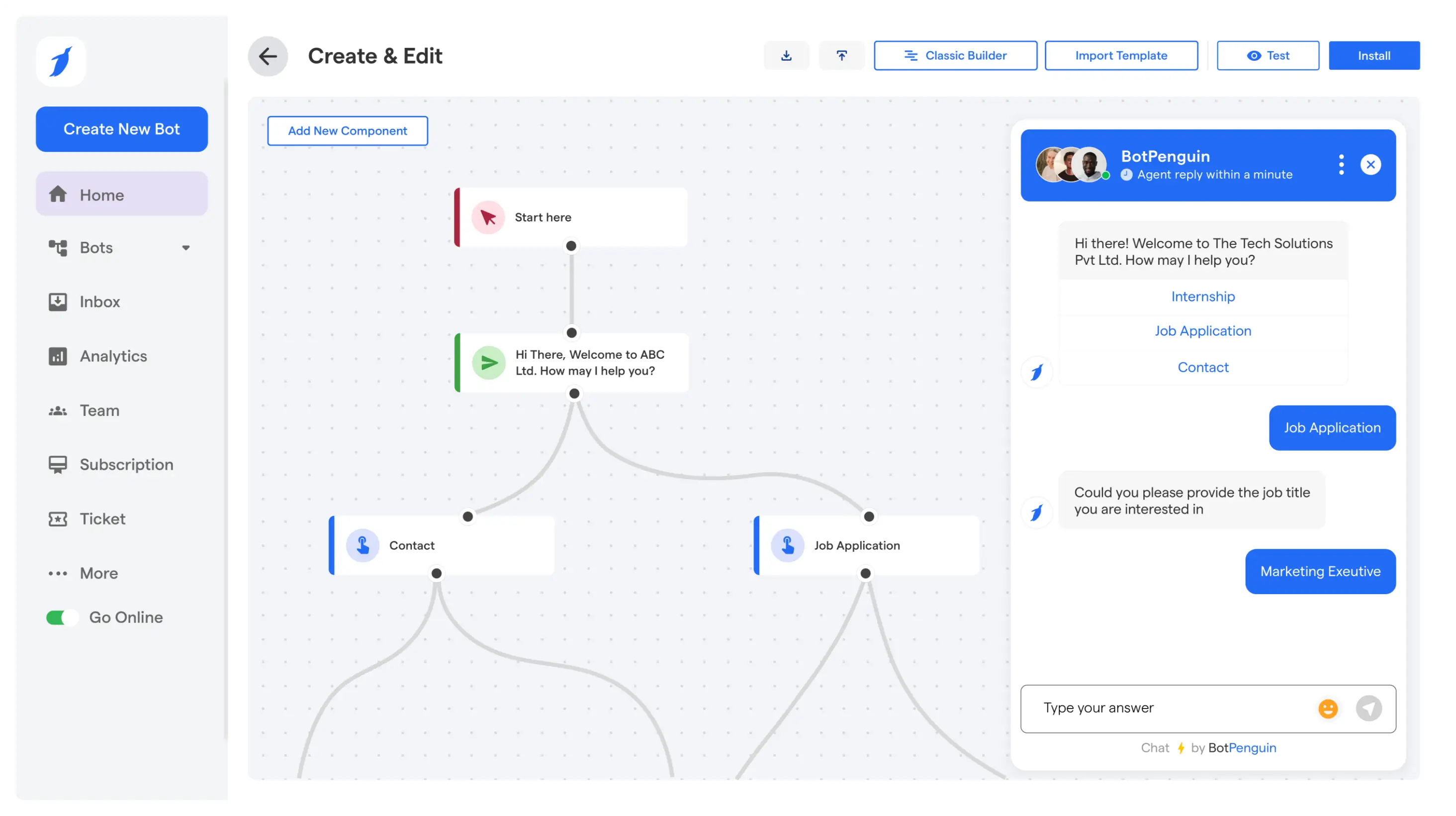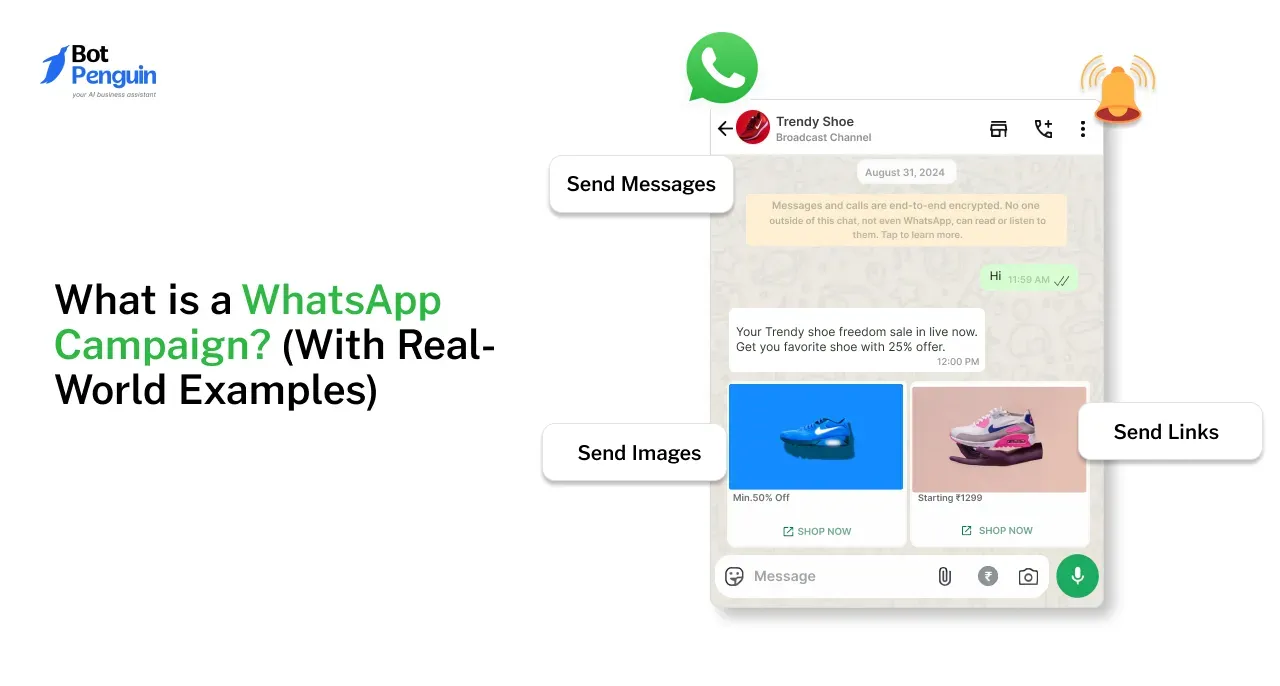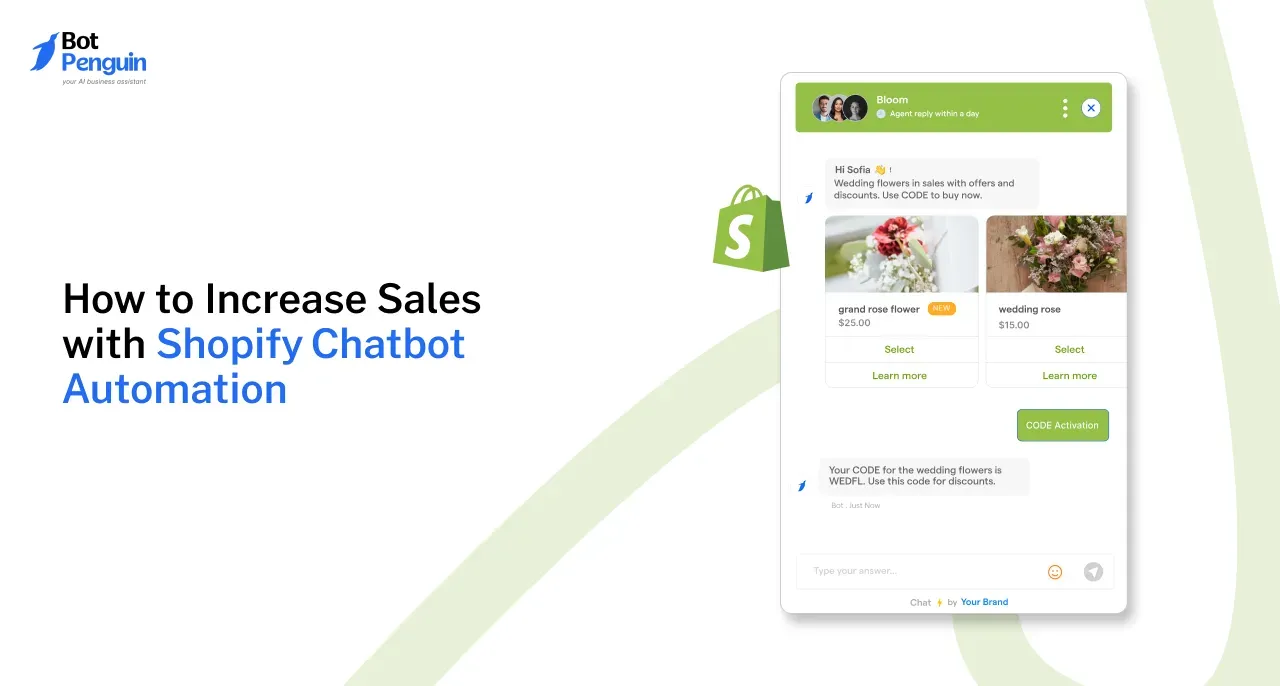Traditional phone systems drain budgets, limit flexibility, and tie businesses to physical offices.
For a growing company, every missed call or rigid setup means lost opportunities. Teams working remotely face even bigger challenges when communication depends on outdated lines.
This is where cloud telephony steps in. By moving calls to the internet, businesses gain mobility, cost savings, and smarter customer handling.
In this blog, you’ll learn what cloud telephony is, how it works, its advantages, pricing insights, and real-world use cases. By the end, you’ll know why it’s becoming the future of business communication.
What is Cloud Telephony?
In the last section, we touched on the struggle with outdated systems and how cloud telephony offers relief. But what exactly does it mean for a business? Imagine running a café with five staff members.
Instead of paying for bulky desk phones and wiring, you handle all calls through a simple internet-based setup. Customers reach you instantly, whether you’re at the counter or checking supplies in the back.
In plain words, cloud telephony system is a phone service that works over the internet. For IT teams, it’s essentially a hosted PBX built on VoIP with API connections for apps like CRM or helpdesk tools. This makes it possible to manage calls at scale without on-site hardware.
It’s often called cloud-based telephony or hosted calling, and the appeal is simple. Companies want flexibility, quick setup, and lower costs. Unlike traditional PBX, which demands space and maintenance, cloud telephony grows with your business and adapts to remote teams with ease.
Understanding the definition is the first step. Next comes the big question: how does cloud telephony actually work?
How Does Cloud Telephony Work?
Now that you know what cloud telephony is, the next step is understanding how it actually functions. Instead of relying on landlines or complex PBX boxes, all communication runs through the internet.
This shift is what makes a cloud based telephony setup more flexible and cost-efficient. Think of it as replacing the cables and switches with software that adapts to your needs instantly.
Here’s the basic flow:
- A user dials a business number.
- The call travels through the internet using VoIP.
- A cloud server routes and manages the call.
- The call reaches an agent’s phone, laptop, or mobile app.
Cloud Telephony vs Traditional PBX
This streamlined process explains why businesses are switching. Whether it’s a startup adding five new employees or a call center scaling to 500 agents, cloud telephony makes it possible without reworking hardware.
With the process clear, it’s time to explore the benefits that make it a smart business choice.
Key Benefits of Cloud Telephony
The biggest reason businesses shift is the clear benefits. After knowing how a cloud telephony system works, it becomes easier to see why it is quickly replacing legacy setups.
Beyond simple call handling, it brings efficiency, cost savings, and flexibility that match modern business needs.
Picture a startup scaling from five employees to fifty in a year or a customer support team spread across cities. With cloud telephony, growth is no longer slowed by infrastructure.
Cost Efficiency
Traditional PBX requires expensive hardware, wiring, and maintenance contracts. A cloud telephony setup eliminates these costs by working on a subscription model.
For example, a small e-commerce brand can set up a professional business number without investing thousands upfront.
Why it matters: It frees up cash flow for marketing, hiring, or product development instead of sinking money into infrastructure.
Scalability
In legacy systems, adding 20 new agents could mean weeks of setup and heavy costs. With cloud telephony, a growing call center can add new users with just a few clicks.
Scaling down is equally simple, making it ideal for seasonal businesses like travel agencies or retail.
Why it matters: It gives businesses the agility to grow or shrink teams without disrupting customer service.
Flexibility
Imagine a sales manager closing a deal while traveling or an employee answering support calls from home. Cloud telephony routes calls to mobiles, desktops, or laptops instantly.
This means businesses stay connected no matter where their teams are.
Why it matters: Customers never feel the gap — they always reach the right person at the right time.
Reliability
Power outages, hardware breakdowns, or even natural disasters can disrupt traditional PBX systems. Cloud providers use multiple redundant servers to ensure calls keep flowing.
A healthcare clinic, for instance, can remain reachable 24/7 even if one line goes down.
Why it matters: Consistent uptime protects revenue and ensures customer trust.
Productivity Tools
Cloud platforms come with features like IVR menus, intelligent routing, call recording, and CRM integration.
A support center can automatically route VIP clients to senior agents or analyze call recordings for training.
Why it matters: Teams work smarter, customers get quicker resolutions, and managers see measurable improvements in performance.
For SMBs, these benefits mean leaner costs and faster scaling. IT managers value the integration and security assurance. CX leaders appreciate the impact on service quality and customer satisfaction.
With benefits established, the next step is exploring the real-world business use cases where cloud telephony proves its value.
Business Use Cases of Cloud Telephony
Cloud telephony isn’t tied to one business type. Its biggest strength is flexibility—whether it’s helping a small business look professional, making call centers more efficient, or enabling global enterprises to collaborate.
Below are real scenarios that show how cloud telephony business solutions adapt to different needs.
SMBs
Small businesses often struggle with credibility when using personal numbers for work.
A cloud setup provides a dedicated cloud telephone number that routes calls to the right team member without exposing personal details.
- Pain: Customers reaching out on personal numbers often experience delays or confusion when employees are unavailable. It creates a scattered image, especially when multiple staff members handle inquiries without coordination. This lack of professionalism can cost small businesses repeat customers.
- Solution: By using a cloud telephone number, calls can be centrally managed and forwarded to the right person instantly. Features like call recording and voicemail add reliability, and no physical infrastructure is required. Employees can pick up calls on mobiles or laptops, ensuring continuity.
- Result: Customers always feel they are dealing with a professional setup. Small companies can scale their communications as they grow without juggling personal phones, improving brand image and customer trust.
Call Centers
Handling large volumes of calls daily is challenging. Agents waste time juggling calls, and customers get stuck in long queues. Cloud telephony solutions fix this by offering IVR menus, automated routing, and real-time dashboards.
- Pain: Traditional call centers often rely on static routing or manual transfers. This leads to long wait times, repetitive queries, and frustrated customers. Managers lack real-time insights, so inefficiencies go unnoticed until they cause bigger problems.
- Solution: Cloud telephony introduces IVR trees that guide callers automatically, intelligent routing that assigns calls to available agents, and dashboards that track live performance. Managers gain visibility into call volumes, agent activity, and service gaps.
- Result: Customer satisfaction improves as callers reach the right department quickly. Agents spend more time solving queries instead of transferring calls, and managers can optimize staffing levels using real-time data.
Enterprises
Enterprises with multiple offices face heavy costs managing separate PBX systems. Cloud telephony provides one unified network across locations.
Teams in different countries connect without worrying about infrastructure.
- Pain: Managing separate PBX setups for every branch leads to ballooning costs and inefficiencies. Updates, maintenance, and downtime create operational gaps, making global collaboration harder for enterprises with remote or distributed teams.
- Solution: Cloud telephony replaces fragmented systems with one unified platform that works across geographies. Calls route intelligently to branches or remote workers, and collaboration tools integrate with CRMs or project management platforms.
- Result: Enterprises achieve lower infrastructure costs and better efficiency. Teams across offices or continents work seamlessly, supporting global expansion strategies without communication bottlenecks.
Mini Success Story
An e-commerce startup faced repeated missed calls during festive season sales. Customers abandoned orders because no one could answer in time.
After adopting cloud telephony, calls were auto-forwarded to available agents and routed via IVR.
- Pain: The company’s small in-house team couldn’t keep up with the surge in inquiries. Customers who waited too long often abandoned their carts, leading to lost sales and negative reviews.
- Solution: Cloud telephony allowed them to set up call forwarding and IVR rules within hours. Calls automatically reached available agents, even if they were working remotely. Recorded messages handled peak traffic efficiently.
- Result: Missed calls dropped by 60% within three months. The support team managed 40% more customer interactions without adding headcount, directly boosting revenue and customer satisfaction.
Cloud telephony adapts to every kind of organization—small, mid, or large. But what makes this flexibility possible is the architecture behind the system, which explains how everything works together.
Cloud Telephony Architecture
Behind the simple user experience lies a structured architecture. Every call you make or receive through a cloud telephony system moves across different layers before reaching its destination.
These layers ensure quality, scalability, and security, making the system reliable even for industries that cannot afford downtime.
For IT managers, knowing how these layers work helps them trust that the solution isn’t just convenient but also robust enough for high call volumes and compliance-heavy environments.
- Cloud Server Layer: This is where all calls are hosted and managed. Distributed servers spread across multiple data centers keep calls flowing smoothly. Even if one server fails, redundancy ensures the call routes through another.
- VoIP System Layer: Here, voice is converted into digital data packets and transmitted over the internet. Using standards like SIP, the system maintains call quality even during heavy network traffic.
- API & CRM Integration Layer: This layer bridges communication with business tools. APIs allow calls to sync automatically with CRMs, ticketing software, or analytics dashboards, ensuring complete visibility of customer interactions.
- End Device Layer: The final destination is the user’s chosen device. Calls can reach desk phones, laptops, or mobile apps, giving remote and hybrid teams the same accessibility as office-based staff.
- Security and Compliance: Every layer includes encryption and monitoring. Providers follow global standards such as GDPR for data privacy and HIPAA for healthcare compliance. This makes cloud telephony architecture suitable even for sensitive industries like finance or healthcare.
By breaking down the architecture, it’s clear that cloud telephony combines user simplicity with technical depth. With the foundation established, the next step is exploring pricing and how the market is shaping its adoption.
─────────────────────────┐
│ Cloud Server Layer │
│ Hosts & manages calls, │
│ ensures redundancy & 99% │
│ uptime across data centers │
└─────────────▲─────────────┘
│
┌─────────────┴─────────────┐
│ VoIP System Layer │
│ Converts voice into │
│ digital packets, uses SIP │
│ for clear communication │
└─────────────▲─────────────┘
│
┌─────────────┴─────────────┐
│ API & CRM Integration │
│ Syncs calls with CRMs, │
│ ticketing & analytics for │
│ better visibility │
└─────────────▲─────────────┘
│
┌─────────────┴─────────────┐
│ End Device Layer │
│ Routes calls to desk │
│ phones, laptops or mobile │
│ apps for accessibility │
└───────────────────────────┘
Cloud Telephony Pricing & Market Trends (Decision-Oriented)
One of the top concerns is pricing. After understanding how the system works and its architecture, decision-makers immediately want to know what it will cost—and how quickly it’s becoming critical infrastructure.
Whether you'd like to budget accurately or justify the investment, knowing regional prices and market growth trends is essential.
Pricing Snapshot Across Regions
Hidden Costs to Be Aware Of
- Hardware: Desks phones and headsets cost $60–$150 each, depending on brand and quality (Cloudtalk).
- Feature Add-ons: Call recording, advanced analytics, or CRM integration can increase monthly spend by 15–30%.
- International/Per-minute Fees: Not always included at base pricing—especially if your business handles global calling.
Market Growth Snapshot
- The global cloud telephony service market is valued at ~USD 23.9 billion in 2024, heading to USD 43.3 billion by 2033 (CAGR ~9.8%) (Market Growth Reports, TechRadar).
- Estimates also show similar growth: from USD 23.9 billion to USD 47.8 billion by 2033 at ~7.99% CAGR (IMARC Group).
- Asia-Pacific is the fastest-growing region, with India being a standout performer in SMB adoption of cloud telephony (Market Research Future).
Understanding costs and market momentum confirms cloud telephony is both affordable and increasingly indispensable. Up next, we’ll guide you on how to pick the right cloud telephony provider that fits your needs without overspending.
How to Choose the Right Cloud Telephony Provider
With costs and market trends clear, the next step is evaluating providers. What matters most depends on the role of the decision-maker.
A small business owner will focus on cost and setup, IT managers prioritize integrations and compliance, and CX managers want tools that improve customer service. Here’s how each persona should approach the choice of a cloud telephony provider.
For SMB Owners
Small businesses need solutions that are affordable and simple to manage. They often lack dedicated IT teams, so the system must be easy to implement and expand.
- Affordability: Look for providers offering flexible monthly pricing that fits a lean budget.
- Ease of Setup: Quick onboarding and minimal hardware ensure faster adoption.
- Core Services: Essential cloud telephony services like call forwarding, voicemail, and a dedicated business number make the business appear professional.
- Scalability: Systems that allow adding or removing users easily help SMBs adjust during growth or seasonal demand.
Finishing line: For SMBs, the right provider is one that delivers professionalism without complexity or high upfront costs.
For IT Managers
IT leaders care about reliability, integration, and compliance. They need assurance that the system won’t just work but will fit securely into the broader tech ecosystem.
- Integration Capabilities: A strong cloud telephony solution should connect with CRMs, ERPs, and ticketing systems.
- Service Level Agreements (SLAs): Providers must guarantee uptime with redundancy built into their architecture.
- Security Standards: End-to-end encryption, GDPR alignment, and HIPAA compliance are must-haves for sensitive industries.
- Management Tools: APIs and admin dashboards allow IT teams to automate workflows and monitor usage in real time.
Finishing line: For IT managers, the right choice is a provider that balances innovation with compliance and long-term stability.
For CX Managers
Customer experience leaders are focused on efficiency. Their priority is ensuring customers are never left waiting and agents have the tools to perform at their best.
- Multi-Agent Handling: Providers must support concurrent calls without compromising call quality.
- IVR & Routing: Smart routing ensures customers connect with the right department quickly.
- Reporting & Analytics: Real-time dashboards track call volumes, resolution times, and performance metrics.
- Ease of Control: Intuitive admin panels let managers update IVR flows or routing without IT involvement.
Finishing line: For CX leaders, the right provider is one that helps agents deliver faster responses and improves the customer journey overall.
Each role has its lens: SMBs focus on affordability, IT managers look for compliance and reliability, and CX managers emphasize efficiency.
Balancing these perspectives ensures you choose a cloud telephony provider that benefits the entire business. The next step is measuring ROI and seeing how these services perform in real-world scenarios.
ROI & Real-World Benefits
When businesses evaluate new technology, one question always leads: What’s the return? Features may look attractive, but decision-makers want proof that adoption improves both finances and operations.
The real benefits of cloud telephony come alive when you measure cost savings, productivity, and scalability alongside the everyday improvements it brings to customer experience and team performance.
ROI Snapshot: The Numbers That Matter
1. Lower Operational Cost
Legacy PBX systems demand heavy upfront investments in hardware, licenses, and ongoing maintenance contracts. IT staff are often dedicated solely to managing phone infrastructure.
With cloud telephony, all of that shifts to a provider-managed subscription model.
- Businesses save anywhere between 30–40% on communication costs annually.
- Expenses become predictable with fixed monthly billing, reducing financial risk.
- Example: A mid-sized healthcare clinic eliminated desk phone upkeep contracts worth thousands, saving 40% yearly while keeping a professional image.
2. Higher Agent Productivity
When agents have the right tools, service times drop and satisfaction rises. With IVR menus guiding callers and CRM integrations presenting context instantly, teams spend less time on administrative work.
- Companies adopting cloud telephony often reduce average handling times by 20–30%.
- Agents handle more calls per shift without burnout.
- Example: An insurance provider saw call resolution speeds increase by 25% once they integrated telephony with their CRM. Customers were happier, and employees had less repetitive stress.
3. Scalability for Growth
Growth should be exciting, not a logistical nightmare. Traditional systems slow expansion with weeks of setup and costly wiring. Cloud telephony removes that friction.
- New users or numbers can be added in hours, not weeks.
- Seasonal businesses (like travel or e-commerce) can scale capacity up or down with demand.
- Example: A retail chain opening three new outlets scaled their telephony in days, ensuring no customer inquiry was missed during expansion.
Real-World Benefits: Beyond the Numbers
1. Improved Customer Satisfaction
Nothing frustrates customers more than long waits or unanswered calls. With smart routing and multi-agent handling, callers reach the right person quickly.
This translates into stronger trust and repeat business.
2. Greater Business Agility
Remote work is now standard, but legacy systems keep teams tied to office lines. Cloud telephony lets employees take calls from mobiles, laptops, or softphones, keeping businesses agile regardless of location.
3. Enhanced Reliability
Cloud providers ensure redundancy with distributed servers, offering uptime guarantees of 99% or higher. Companies no longer worry about downtime during peak demand or local outages.
4. Team Collaboration
Because calls integrate with CRMs, analytics dashboards, and ticketing tools, sales, marketing, and support all share the same view. This eliminates silos and boosts alignment across departments.
Mini Case Study: E-commerce Brand
A fast-growing online retailer faced frequent missed calls during festive sales peaks. Customers often abandoned carts because they couldn’t reach support on time. The company adopted cloud telephony with IVR and call forwarding.
Impact:
- Missed calls fell by 60% in just three months.
- The support team managed 40% more queries without hiring additional staff.
- Customer satisfaction scores rose sharply, directly boosting repeat sales.
This case shows how cloud telephony business adoption drives ROI while creating real competitive advantage in customer experience.
From measurable savings to everyday improvements, cloud telephony offers both ROI and long-term business value. It cuts costs, boosts productivity, and enables seamless scaling, while also enhancing customer satisfaction and collaboration.
These dual outcomes explain why adoption is growing across industries worldwide. With results clear, the final step is pulling these insights together and looking at what businesses should do next.
Conclusion
Cloud telephony has become more than a technology trend—it’s the modern way businesses handle communication. It delivers scalability, cost efficiency, and reliability, replacing rigid PBX systems with flexible cloud telephony solutions.
From reducing operational costs to improving customer satisfaction and enabling seamless growth, its impact is clear across industries.
But communication doesn’t end with infrastructure. Businesses also need intelligence—systems that don’t just connect calls but convert them into opportunities.
That’s where AI-powered platforms like BotPenguin come in. Cloud telephony ensures every call reaches your team, while BotPenguin helps those conversations continue across chat, email, or social channels. Together, they create a unified experience where no customer is missed and every interaction adds value.
Pairing AI chatbot + cloud telephony means calls can be logged, analyzed, and followed up automatically. Leads aren’t lost, customers get faster responses, and teams spend more time closing deals instead of chasing data.
For businesses already investing in cloud telephony, BotPenguin is the natural companion to unlock the next layer of efficiency and ROI.
👉 If you’re exploring cloud telephony, make sure you’re also prepared to maximize its potential. Try BotPenguin and turn every call into an opportunity for growth.
Frequently Asked Questions (FAQs)
How do cloud telephony solutions help businesses handle unexpected surges in customer demand?
Cloud telephony solutions let businesses activate temporary lines or agents instantly, ensuring call volumes are managed smoothly during sudden promotional spikes or seasonal demand.
What should companies evaluate when comparing one cloud telephony system to another?
Businesses should compare reporting depth, data portability, user interface simplicity, and the provider’s roadmap for future enhancements when selecting a cloud telephony system.
How can a cloud telephony business maintain communication consistency during staff restructuring?
A cloud telephony business can reassign numbers, queues, and extensions instantly, helping teams maintain continuity even during internal restructuring or departmental changes.
What overlooked benefits of cloud telephony should organizations consider before switching?
Beyond operations, the benefits of cloud telephony include improved audit trails, cleaner communication records, and detailed histories that support compliance audits or performance reviews.
What red flags indicate a cloud telephony provider may not be reliable?
Unclear SLAs, inconsistent billing, limited product updates, and unavailable technical escalation channels often signal a cloud telephony provider that may not support long-term growth.
How can BotPenguin improve workflows for teams using cloud telephony solutions?
BotPenguin can streamline follow-ups, organize conversations across channels, and automate routine tasks, helping teams using cloud telephony solutions manage customer interactions more efficiently



